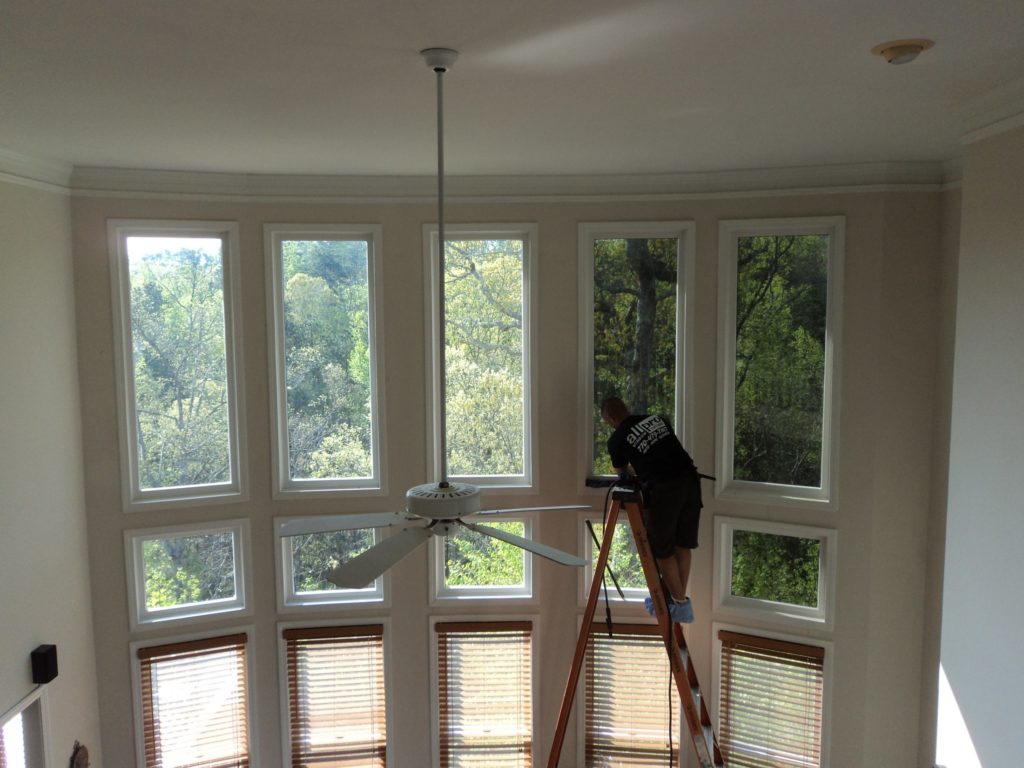Residential Window Tint: Keep Your Home Cool in the Summertime Warmth
Residential Window Tint: Keep Your Home Cool in the Summertime Warmth
Blog Article
Just How Residential Window Tinting Boosts Your Home's Energy Performance
Residential window tinting presents an engaging service for property owners seeking to enhance energy efficiency within their living rooms. By applying specialized movies to home windows, it successfully decreases warm transfer, thus supporting interior temperature levels and lessening the need for excessive home heating or air conditioning.
Understanding Window Tinting
Understanding window tinting is vital for property owners seeking to boost both comfort and power efficiency in their space. Residential Window Tint. Window tinting involves the application of a slim film to the interior or exterior surface of glass windows. This movie can dramatically regulate the quantity of sunshine and warmth that enters a home, therefore affecting indoor environment problems
There are numerous types of home window tinting films offered, each with distinctive residential properties. The effectiveness of window tinting is often determined by its Visible Light Transmission (VLT) portion, which shows exactly how much light can pass through the film.
Advantages of Power Performance
Home window tinting not just enhances visual appeals yet additionally plays a substantial duty in improving power performance within property spaces. By minimizing heat transfer through windows, tinted films produce a more steady interior environment, which can bring about substantial reductions in energy usage for cooling and heating. This energy performance translates right into reduced energy costs, providing house owners with considerable long-lasting financial savings.

Furthermore, window tinting improves the comfort of living rooms. By reducing glare and blocking harmful UV rays, tinted home windows develop an even more enjoyable atmosphere, which can bring about enhanced health for residents. The protection against UV rays additionally assists maintain furniture and flooring from fading, contributing to the longevity of household products.
Exactly How Tinting Functions
Tinting films operate with a mix of sophisticated products and technologies designed to control the quantity of solar power going into a home. Mainly composed of polyester, these movies commonly integrate ceramic or metal fragments that soak up and mirror warm. This double capability enables them to dramatically minimize the penetration of ultraviolet (UV) rays and infrared radiation while allowing noticeable light to travel through.
The effectiveness of home window tinting is determined by its solar warm gain coefficient (SHGC), which suggests just how much solar power is transmitted through the window. Reduced SHGC values are preferable as they signify better warmth being rejected. In addition, window colors can feature a variety of shades, enabling homeowners to customize their aesthetic preferences while boosting energy efficiency.
Moreover, these films function as an obstacle, protecting against heat loss during colder months by reflecting interior warmth back into the space. This thermal insulation result enhances the air conditioning advantages acquired during warmer months, adding to a balanced interior climate year-round. By managing solar power properly, property home window tinting not only enhances comfort however additionally plays an essential role in decreasing power intake and decreasing energy costs.
Picking the Right Tint

There are different kinds of window films available, including dyed, metalized, and ceramic. Ceramic films supply exceptional warm control without compromising presence and are extremely durable, making them a prominent option.
Noticeable light transmission (VLT) is an additional important variable, as it indicates the quantity of all-natural light that can go through the tinted glass. Property owners must choose a tint with a VLT that complements their lights preferences while still supplying ample glare decrease.
Furthermore, evaluating the solar warm gain coefficient (SHGC) can help figure out exactly how well a tint can block warm from sunlight. A reduced SHGC suggests far better heat control, inevitably enhancing energy performance.
Setup and Maintenance Tips
Correct installment and maintenance are vital parts in taking full advantage of the benefits of residential home window tinting. To accomplish ideal outcomes, it is recommended to hire a qualified professional for installation. This makes sure that the color is applied properly, preventing air bubbles, creases, or misalignment that can jeopardize performance. Professionals also use specialized techniques and devices, which can improve the toughness and performance of the tint.
Following installment, upkeep is necessary to lengthen the life of the window film. It is recommended to wait at the very least 30 days before cleansing the tinted windows to allow the adhesive to heal completely.
Furthermore, routine assessments are useful. Look for any type of peeling or bubbling, which can indicate incorrect installation or put on over time - Residential Window Tint. Addressing these concerns quickly can avoid additional damages and keep energy efficiency. By adhering to these setup and maintenance ideas, home owners can ensure their home window tinting remains to supply considerable power cost savings and convenience for years to find.
Conclusion
In conclusion, property home window tinting offers as an efficient solution for improving power performance within homes. By reducing warm transfer and blocking unsafe UV rays, home window movies add to reduce energy consumption and boosted indoor convenience.
Window tinting entails the application of a thin film to the interior or exterior surface of glass his response windows. By decreasing heat transfer with windows, tinted films produce a much more steady indoor environment, which can lead to substantial reductions in power intake for home heating and cooling.The performance of home window tinting is measured by its image source solar heat gain coefficient (SHGC), which suggests exactly how much solar energy is transmitted via the window. By handling solar energy efficiently, residential home window tinting not only enhances convenience yet additionally plays a crucial function in decreasing power intake and decreasing energy expenses.
By decreasing heat transfer and obstructing unsafe UV rays, home window movies contribute to lower power consumption and enhanced indoor convenience.
Report this page